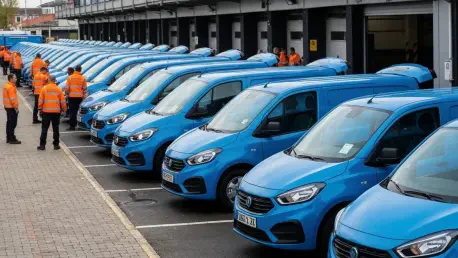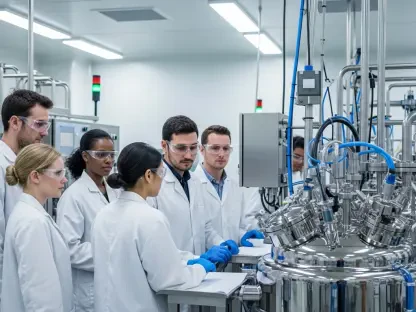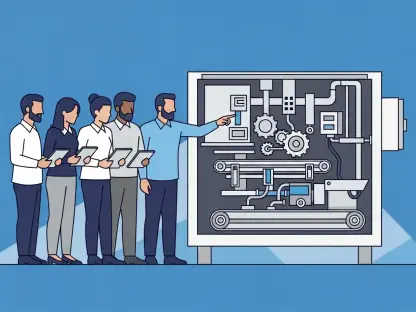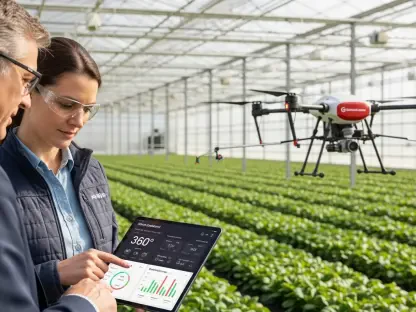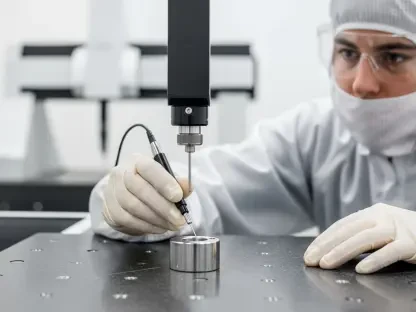I’m thrilled to sit down with Kwame Zaire, a renowned expert in manufacturing and production management with a deep focus on electronics, equipment, and sustainability in logistics. With his extensive background in predictive maintenance, quality, and safety, Kwame offers invaluable insights into the evolving landscape of sustainable transportation. Today, we’re diving into Amazon’s groundbreaking efforts to decarbonize its UK transportation network through a massive investment in electric vehicles and innovative partnerships. Our conversation explores the motivations behind this initiative, the challenges of scaling electric fleets, the technology driving these changes, and the broader impact on the logistics industry.
What sparked Amazon’s decision to expand its UK fleet with nearly 1,000 new electric vans and trucks?
Amazon’s move to bolster its UK fleet with electric vehicles is driven by a clear commitment to sustainability. The company has set an ambitious goal of achieving net-zero carbon emissions by 2040, and this rollout is a tangible step toward that target. Electrifying their delivery and heavy-goods vehicles cuts down on greenhouse gas emissions significantly, especially in a market like the UK where there’s strong governmental and public support for green initiatives. It’s also about meeting customer expectations—people increasingly want to support businesses that prioritize the environment.
How does this initiative align with Amazon’s global vision for sustainability?
Globally, Amazon is pushing hard to transform its logistics operations, and the UK expansion fits perfectly into that broader vision. With over 35,000 electric delivery vans already in operation worldwide, they’re building a blueprint for zero-emission logistics. The UK’s addition of 160 electric heavy-goods vehicles (eHGVs) isn’t just a local win—it’s a model for other regions. It shows how large-scale adoption of electric fleets can work in practice, paving the way for similar efforts elsewhere while contributing to their 2040 net-zero goal.
Why focus such a significant rollout of electric heavy-goods vehicles specifically in the UK?
The UK presents a unique opportunity due to its compact geography and robust policy support for decarbonization. The government’s initiatives, like the Zero Emission HGV and Infrastructure Demonstrator program, provide financial and structural backing for projects like this. Plus, the UK’s dense urban centers and high delivery demand make it a perfect testing ground for eHGVs. Amazon can demonstrate the viability of electric trucks in a challenging, high-volume environment, which could influence adoption in other markets.
Can you elaborate on the significance of Amazon’s order of 160 eHGVs for its UK operations?
This order is a game-changer—it’s the largest single order of eHGVs in the UK to date and creates the biggest fleet of electric trucks in Amazon’s global network. That’s a bold statement about their commitment to decarbonizing logistics in the region. These trucks will play a critical role in moving goods between fulfillment centers, sort centers, and delivery stations, ensuring that a huge chunk of their supply chain operates with zero tailpipe emissions. It’s a benchmark for the industry.
What kind of environmental and operational impact do you foresee once this fleet is fully active?
Once fully operational, the fleet is expected to cover distances equivalent to over 450 trips around the Earth annually while carrying more than 300 million products. That’s a staggering scale of operation with a massive reduction in carbon footprint compared to traditional diesel trucks. Environmentally, it’s a win by cutting emissions; operationally, it enhances efficiency in moving goods across hubs. For customers, it means faster, greener deliveries, aligning with growing demand for sustainable practices.
What are some of the biggest hurdles Amazon faces in scaling up its electric vehicle operations in the UK?
One of the primary challenges is charging infrastructure. While Amazon has invested in its own fast-charging facilities, the national network isn’t yet robust enough to support widespread eHGV adoption. Issues like charger availability, grid capacity, and installation costs are real barriers. Beyond that, there’s the complexity of integrating electric fleets into existing logistics systems—things like driver training and maintenance protocols need to evolve. It’s a steep climb to make this scalable across the entire industry.
How is Amazon tackling the challenge of charging infrastructure for its electric fleet?
Amazon has taken proactive steps by installing fast-charging points at its UK sites, capable of charging trucks from 20% to 80% in just over an hour. That’s a critical investment to keep their operations running smoothly. They’re also collaborating with industry partners and advocating for government support to expand the national charging network. It’s a multi-pronged approach—building their own capacity while pushing for broader systemic change to ensure long-term success.
Can you tell us more about the Mercedes-Benz eActros 600 model and why it’s a good fit for Amazon’s needs?
The eActros 600 is a cutting-edge electric truck designed for heavy-duty logistics, which makes it ideal for Amazon’s operations. It can haul up to 22 metric tonnes, matching the capacity needs for moving large volumes of goods between hubs. Its design focuses on efficiency and sustainability, with a battery system that supports long-haul routes. The fast-charging capability is a standout feature, minimizing downtime. It’s a perfect match for a company looking to balance operational demands with green goals.
How does Amazon’s partnership with Daimler Truck reflect its approach to sustainable logistics?
This partnership underscores Amazon’s strategy of collaborating with innovative manufacturers to drive sustainability. Daimler Truck brings expertise in building reliable, high-performance electric vehicles like the eActros 600, aligning with Amazon’s vision of decarbonizing freight transport. It’s not just about buying trucks—it’s about fostering a shared commitment to greener logistics. This kind of collaboration sets a precedent for how large corporations can work with industry leaders to push boundaries in sustainable transport.
What’s your forecast for the future of electric heavy-goods vehicles in the logistics industry?
I’m optimistic about the trajectory of eHGVs in logistics. With companies like Amazon leading the charge, we’re seeing real momentum toward widespread adoption. Advances in battery technology and charging infrastructure will likely lower costs and improve range over the next decade, making electric trucks even more viable. Government policies and industry collaboration will be key to scaling this up. I believe we’re on the cusp of a major shift where electric fleets become the norm rather than the exception in freight transport.
